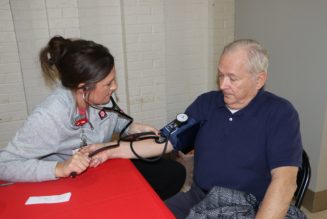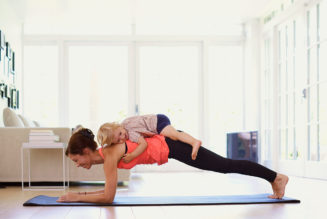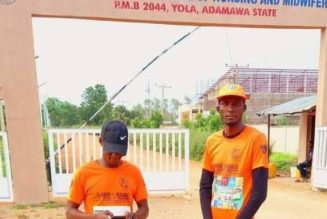Biohacking is about experimenting with changes to your diet, exercise routine, and lifestyle that may cause a shift in your physiology to make you feel better, look better, and possibly help you live longer. At its core, this trendy term is like DIY biology.
The tweaks can be simple, like trying a new nutritional supplement, or they can be totally unusual and futuristic. People have been known to implant magnets or other devices in their body in an attempt to do things like communicate their blood pressure via Bluetooth or prevent memory loss.
Biohacking’s gotten trendy in recent years partially because it has some prominent devotees (including Tom Brady, Hailey Bieber, and Dave Asprey, a.k.a., the founder of Bulletproof and Upgrade Labs), and partially because it feels cool and a little bit sci-fi. And who wouldn’t want to make changes that can boost your health, not to mention your athleticism? (Maybe not the magnets, but the simpler swaps anyway.)
In truth, not much can change the general rules of healthy living, but if you’re curious about biohacking, we have a few ways to add aspects of it to your daily routine—from some tech-y treatments still on the horizon to try-right-now tips.
How to Biohack Your Nutrition
Downing a recovery shake after a run is a sort of biohacking. But scientific advances in the past few years by way of something called nutrigenomics has made implementing super-technical tweaks to your diet to boost athletic performance (and other aspects of your health) totally achievable.
“Nutrigenomics looks at the way our genetic makeup, our individual genetic variance, affects the way we’ll respond to different nutrients,” explains Devon Peart, R.D., a registered dietitian, nutrition coach, and lead of the nutrigenomics program at Cleveland Clinic Canada. It works by taking a close look at your DNA from a sample of your saliva, zooming in on dozens of genes and pinpointing variants that are connected with various aspects of health and fitness.
The key is that you don’t want to try to decode the results yourself; it’s always recommended to discuss the findings and how you might implement them with your doctor and/or a registered dietitian. Prices vary, but testing with a reputable lab will probably cost you at least a few hundred dollars, and while those labs may be harder to find right now, Cleveland Clinic typically works with a nutrigenomics company called Nutrigenomix.
There are several genetic markers found in these tests that clue you into ways you can boost your fitness. For example, you’ll get information about your CYP1A2 gene, which encodes for the reception of caffeine. Based on your genotype, it suggests whether you metabolize caffeine fast or slowly—and that can affect your athletic performance.
In fact, having a moderate dose of caffeine preworkout led to improved performance among cyclists with the fast-metabolizer genotype but a 13.7 percent reduction in performance among those with the slow-metabolizer genotype, according to a 2018 study published in the journal Medicine & Science in Sports & Exercise.
Other genes and genetic variants that are detailed in nutrigenomics testing can reveal things like how your body responds to strength training, how exercise might affect your cholesterol, and whether you’re more prone to stress fractures.
Having nutritional advice fine-tuned to you and your training could give you a performance boost, but it’s not diagnostic and, of course, it doesn’t guarantee outcomes. “It’s important to keep perspective: We can’t totally control our health,” says Peart. “Health is very, very complex. Your genes make up one part of that, lifestyle makes up another part, environment exposure, stress levels, sleep quality—there’s so many things that play into people’s health. Think of nutrigenomics as one tool in your toolbox.”
How to Biohack Your Sleep
Getting enough sleep each night (i.e., seven-plus hours for most adults) is crucial for your overall health: It improves your brain function and your mood, while slashing your risk of diseases and health conditions, like heart disease and dementia. It’s also been shown to boost athletic performance.
Regardless of their skill or training level, endurance athletes who experienced as little as one night of partial sleep deprivation showed a moderate negative effect on their performance, according to a 2022 study published in the European Journal of Sport Science.
This is where wearable tech has the potential to give you a bump. Devices like Fitbit and Oura ring boast functions that track your sleep patterns via wavelengths of light (to track your heart rate) and actigraphy (to detect motion). The idea is that you can use their findings to then shift details of your day—cutting out caffeine in the p.m., adjusting meal times, figuring out the best bedtime for you—to optimize your sleep and make sure you’re going into tomorrow’s run as well rested as possible.
“In general, these are initially studied with a young, healthy population and are meant to be for sleep awareness rather than a medical device,” says Sara Benjamin, M.D., medical director of clinical operations at the Johns Hopkins Center for Sleep and Wellness. “You may think you’re keeping track of your bedtime and wake time, but sometimes we stay up later than intended. These devices can help you to look at how much time you’re sleeping night to night and over time and see if there are patterns that we need to change.”
Keep in mind, she says, that factors including sweat, body hair, skin tone, body build, and tattoos may affect your readings. And if your device tracks oxygen saturation levels and you notice yours dipping at night, see a doctor, as you may need to consider testing for sleep apnea.
How to Biohack Your Recovery
There’s a lot that goes into bouncing back after a tough run or other intense workout, including nutrition and sleep. Even if you take time to put your feet up and rest, it can be tough to know when your body’s good to go again.
Wearable devices may give you a tech-y edge here, too. Garmin smartwatches predict your recovery time postworkout (based on details like your excess post-exercise oxygen consumption, or EPOC, and your VO2 max) and also have a training status future, which blends various data metrics to determine whether you’ve been productive in your training, for example, or possibly overreaching or even strained and need to dial things back.
Oura also offers a readiness score and recently partnered with Strava to connect workouts from that platform into the Oura app. “Your readiness score is designed to give a holistic picture of your health, taking into account your recent activity, sleep, and body signals like resting heart rate and body temperature,” says Caroline Kryder, product manager at Oura.
Another popular strategy for biohacking recovery is to use infrared light therapy. The idea is that this low-powered red light is absorbed well by the skin and that it can help by upping production of antioxidants and nixing production of inflammatory compounds. A 2016 review of literature from Harvard and MIT researchers suggests that use of both red and near-infrared light therapy help athletes increase muscle mass after training and decrease inflammation and oxidative stress.
How to Biohack Your Longevity
Athletes tend to be super-aware of dips in their performance as they get older (gen Z runners, we are not looking at you… yet). It’s generally thought that endurance athletes hit their peak ability somewhere between the age of 25 and 35. One recent study of runners in the Berlin Marathon found that women hit their peak times at age 32, men at 34.
So yes, you might be happy to hear that the aging process may be another factor you can biohack as well. Richard G.A. Faragher, Ph.D., a professor of biogerontology at the University of Brighton in England, has studied the process of cellular senescence. To put it simply, when our cells become senescent that means they’re still living but non-dividing, and this process seems to be a cause of aging.
“When senescent cells are removed from old mice, they show really enhanced abilities to run on wheels: They run about 175 percent as much and take twice as long to become exhausted compared to their litter mates filled with senescent cells,” he says. “There’s a great deal of interest in duplicating these effects in humans using compounds called senolytics [a class of drugs used to help clear certain senescent cells], and interest in reversing senescence or blocking its bad effects.”
While those processes are still being researched and developed, there’s an easy way to help your body remove senescent cells: Keep exercising. Middle-aged and older cyclists show improved immunity because they continue to make new T cells, while sedentary elderly people have stopped doing so, says Faragher.
Now obviously keeping up your running routine isn’t going to completely stave off the performance decline that tends to come with aging, but moving regularly will help keep you stronger for longer.
The Takeaway on Biohacking
Biohacking is a trendy topic because it’s exciting. But none of these tweaks—from simply getting more zzz’s to plugging into more tech devices—are a magic pill in general or when it comes to your running performance. So experiment with caution, and make sure you’re still lacing up and putting in the work.
The best ways to take care of your health and performance are the tried-and-true (and simple!) lifestyle habits of moving more, more frequently and eating a diet full of lean protein, whole grains, healthy fats, and fruits and veggies.

Laurel Leicht is a writer and editor in Brooklyn. She’s covered health, fitness, and travel for outlets including Well+Good, Glamour, and O, The Oprah Magazine.









